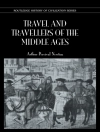Detailed and comprehensive, this book is the first survey of cinema exhibition in Britain from its inception until the present.
Charting the development of cinema exhibition and cinema-going in Britain from the first public film screening by the Lumière Brothers’ at London’s Regent Street Polytechnic in February 1896, through to the development of the multiplex and giant megaplex cinemas, the history of cinema exhibition is placed in its wider social, cultural and economic contexts. Adopting a chronological structure, this book takes into account how changes in the structure of the film industry, especially regarding the exhibition sector, impacted upon the cinema-going experience.
From silent screen to multi-screen will be valuable for social historians as well as scholars and students in film studies, media studies and cultural history.
Tabela de Conteúdo
Introduction
1 From the fairground to the picture palace: 1896 – 1913
2 Post-war consolidation, the coming of sound and Hollywood: 1913 – 1930
3 Cinema as mass entertainment: 1930 – 1950
4 From ‘golden age’ to the beginnings of decline: 1950 – 1960
5 Sub-dividing and falling, and the lessons from the United States: 1960s – 1984
6 The multiplex revolution: 1985 – present
7 The future for cinema exhibition in the digital age
Select bibliography
Sobre o autor
Stuart Hanson is Senior Lecturer in Media Studies at De Montfort University, Leicester












